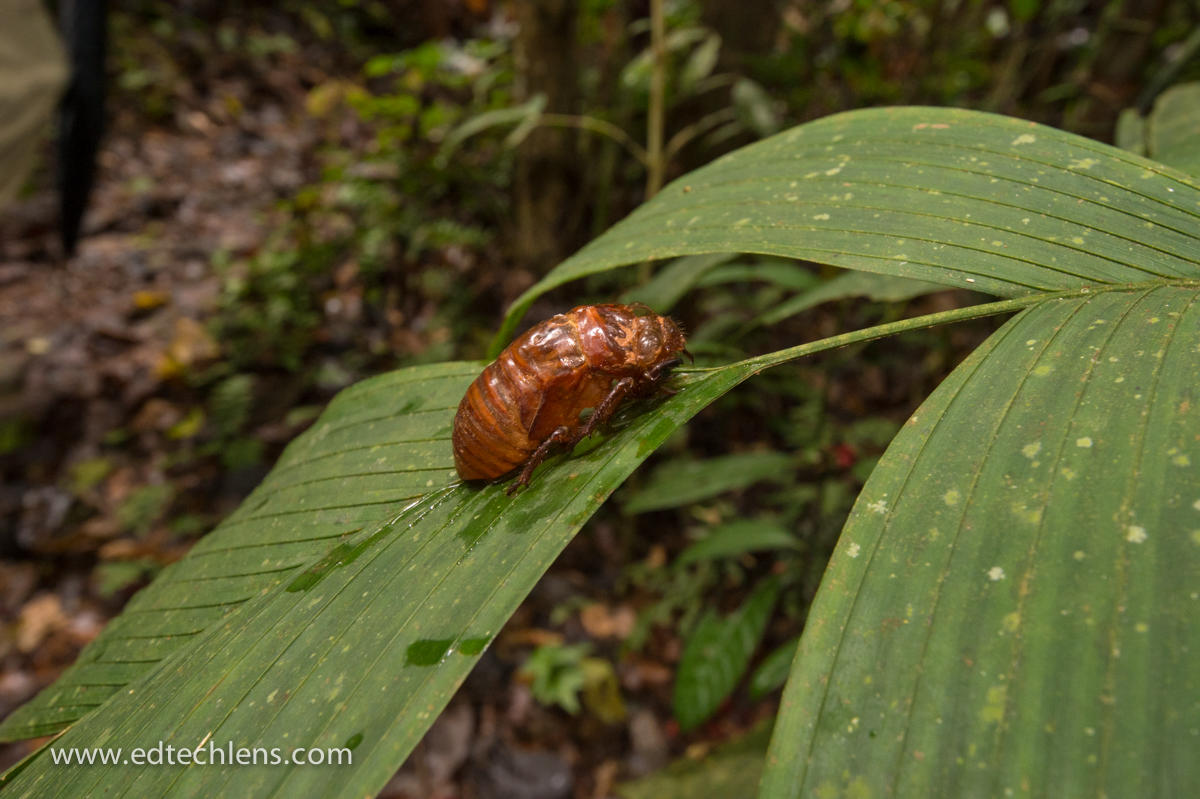In the rainforest, animals have many different ways of protecting themselves. Think about this: have you ever noticed that an insect looks like it is wearing a hard-coated covering? That covering is called an exoskeleton. The word “exo” means outside, so the word exoskeleton means an outside skeleton.
Unlike humans who have a skeleton inside their bodies that provides support, insects rely on the exoskeleton to help support and protect them. The exoskeleton of insects is made of a substance called chitin. Other animals might have an exoskeleton made of cartilage or bone.
Probably one of the most recognized insects both in the rainforest and possibly in your own backyard is the cicada. This sturdy insect is also known for the buzzing sounds it makes during the summer months.
Look at the image below. See the exoskeleton on this cicada? Underneath this coat are tymbals, a special covering that help the cicada make its distinctive sound.
Unlike humans who have a skeleton inside their bodies that provides support, insects rely on the exoskeleton to help support and protect them. The exoskeleton of insects is made of a substance called chitin. Other animals might have an exoskeleton made of cartilage or bone.
Probably one of the most recognized insects both in the rainforest and possibly in your own backyard is the cicada. This sturdy insect is also known for the buzzing sounds it makes during the summer months.
Look at the image below. See the exoskeleton on this cicada? Underneath this coat are tymbals, a special covering that help the cicada make its distinctive sound.

Besides protecting the body of an insect, exoskeletons help in other ways too. Underneath that hard shell are the muscles as well as other body parts that can help the insect to find its food.
Unlike humans, whose bones grow within the body, insects must shed their exoskeletons as they grow. This process is called molting. This can be a problem as the new exoskeleton is often soft and must take time to harden, making the insect easy prey for predators.
Something to Think About: How might an exoskeleton help to protect an insect in its environment?
Unlike humans, whose bones grow within the body, insects must shed their exoskeletons as they grow. This process is called molting. This can be a problem as the new exoskeleton is often soft and must take time to harden, making the insect easy prey for predators.
Something to Think About: How might an exoskeleton help to protect an insect in its environment?
Rainforest Kids Science curriculum connection: Unit 3: Chapter 1, Lessons 1+2, Grades K-5

